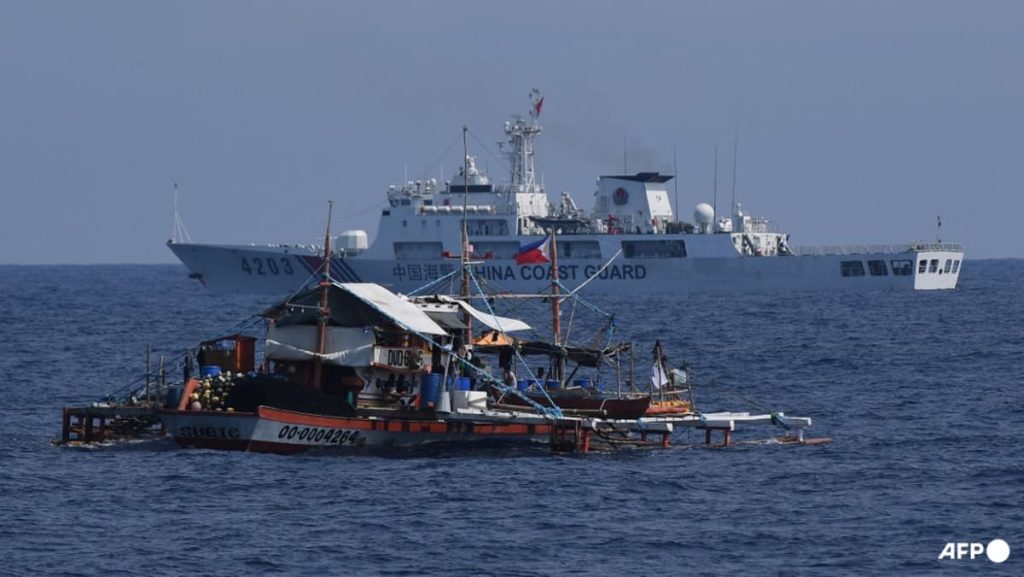The simmering tension in the South China Sea between China and the Philippines has escalated once again, fueled by a recent report revealing the devastating environmental impact of China’s extensive construction activities in the disputed waters. A 2023 study by the Center for Strategic and International Studies (CSIS) documented the burial of over 1,861 hectares of vital reef ecosystems due to China’s relentless island-building and dredging operations. This ecological devastation has ignited the Philippines’ resolve to pursue legal action against China, seeking compensation for the irreversible damage inflicted upon its marine environment. The dispute over the South China Sea, rich in resources and strategically vital, has long been a point of contention between the two nations, with frequent confrontations between vessels in the Philippines’ Exclusive Economic Zone (EEZ). The recent environmental revelations add a new dimension to the conflict, highlighting the ecological cost of China’s assertive actions in the region.
The Philippines is actively preparing a second legal case against China, focusing specifically on the environmental damage caused by Chinese activities. This follows the landmark 2016 ruling by the Permanent Court of Arbitration in The Hague, which invalidated China’s sweeping claims over the South China Sea. While China rejected the 2016 ruling, the Philippines views it as a crucial legal precedent. The forthcoming legal action aims to hold China accountable for the destruction of coral reefs, the disruption of marine biodiversity, and the overall degradation of the marine environment within the contested waters. Philippine Justice Secretary Jesus Crispin Remulla emphasized the urgency of the case, stating that the government intends to file it within the current year. He underlined that the case is primarily civil in nature, seeking financial compensation for the environmental damage. The Philippines believes it has “a lot of evidence” gathered by the Philippine Coast Guard and other agencies operating in the South China Sea to substantiate its claims.
The specific Chinese activities cited by the Philippines include dredging, coral harvesting, and the construction of artificial islands. These activities, according to Manila, have not only directly destroyed vast tracts of coral reefs, but have also severely disrupted the delicate balance of the marine ecosystem, with long-term consequences for biodiversity and the livelihoods of those dependent on the sea. The dredging process, for instance, involves excavating seabed material, which creates plumes of sediment that smother coral reefs and other marine life. Coral harvesting, the removal of living coral for construction or commercial purposes, further decimates these vital ecosystems. The construction of artificial islands, on an unprecedented scale by China, not only destroys existing reefs but also alters water currents and disrupts natural habitats.
China’s counter-argument accuses the Philippines of causing damage to the Second Thomas Shoal by deliberately grounding a warship there in 1999. This aging vessel, the BRP Sierra Madre, serves as a Philippine military outpost in the disputed area. China contends that the grounded ship is contributing to environmental degradation. However, the Philippines maintains that the ship’s presence is a legitimate exercise of its sovereign rights within its EEZ and is necessary to counter China’s expanding presence in the region. The differing narratives about the grounded ship underscore the complex interplay of legal, strategic, and environmental considerations at the heart of the South China Sea dispute.
The Philippines is currently exploring various legal avenues for its case, including the Permanent Court of Arbitration, which ruled in its favor in 2016, and the International Court of Justice. The selection of the appropriate venue will depend on jurisdictional considerations and the specific legal strategy employed. The Philippines aims to present a compelling case, backed by robust evidence, to demonstrate the extent of the environmental damage caused by Chinese activities and to secure compensation for the losses incurred. The success of this legal action could set an important precedent for environmental protection in disputed maritime zones and contribute to establishing a more sustainable approach to development in the South China Sea.
The South China Sea dispute is a multifaceted geopolitical challenge involving territorial claims, resource competition, freedom of navigation, and now, increasingly, environmental protection. The Philippines’ decision to pursue a second legal case focused on environmental damage reflects a growing global awareness of the importance of preserving marine ecosystems and holding states accountable for environmental degradation. The outcome of this case could significantly influence the future trajectory of the South China Sea dispute and shape the legal framework for addressing environmental issues in contested maritime areas. The case’s progress will be closely watched by other nations with interests in the South China Sea, as well as by international organizations concerned with environmental protection and the rule of law in maritime disputes.

